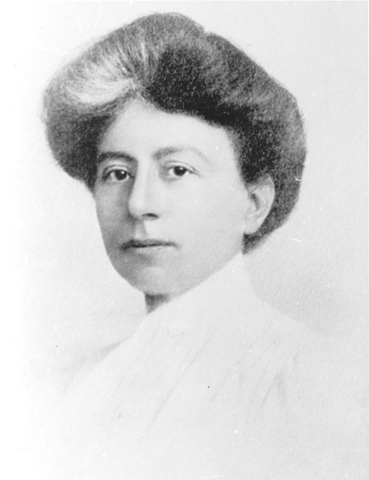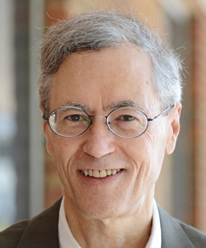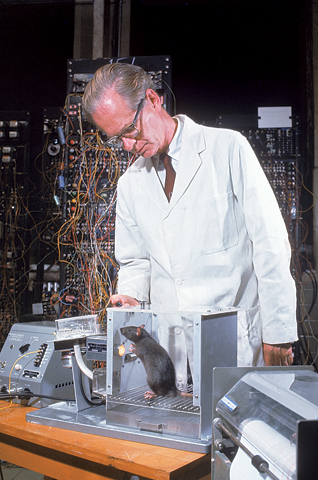1.3 The Search for Objective Measurement: Behaviourism Takes Centre Stage
Our discussion of the development of clinical psychology into the 1960s took us a little ahead of ourselves—
The schools of psychological thought that had developed by the early twentieth century—
1.3.1 Watson and the Emergence of Behaviourism

John Broadus Watson (1878–
Why would someone want to throw the mind out of psychology? This may seem excessive, until you notice that Watson studied the behaviour of animals such as rats and birds. In such studies, inferring a mind is a matter of some debate. Shall we say that dogs have minds, for instance, but leave out pigeons? If we include pigeons, what about worms? Animal behaviour specialists staked out claims in this area. In 1908, Margaret Floy Washburn (1871–
How did behaviourism help psychology advance as a science?
Watson was influenced by the work of Russian physiologist Ivan Pavlov (1849–
OTHER VOICES: Is Psychology a Science?

Nobody can dispute that you are taking a course in psychology, but are you taking a science course? Some critics maintain that psychology fails to meet accepted criteria for what constitutes a science. Timothy Wilson, a psychology professor at the University of Virginia, took on the critics by drawing from an appropriate source: the scientific literature (Wilson, 2012).
Once, during a meeting at my university, a biologist mentioned that he was the only faculty member present from a science department. When I corrected him, noting that I was from the Department of Psychology, he waved his hand dismissively, as if I were a Little Leaguer telling a member of the New York Yankees that I too played baseball.
There has long been snobbery in the sciences, with the “hard” ones (physics, chemistry, biology) considering themselves to be more legitimate than the “soft” ones (psychology, sociology). It is thus no surprise that many members of the general public feel the same way. But of late, skepticism about the rigors of social science has reached absurd heights. The U.S. House of Representatives recently voted to eliminate funding for political science research through the National Science Foundation. In the wake of that action, an opinion writer for the Washington Post suggested that the House did not go far enough. The NSF should not fund any research in the social sciences, wrote Charles Lane, because “unlike hypotheses in the hard sciences, hypotheses about society usually cannot be proven or disproven by experimentation.”
Lane’s comments echoed ones by Gary Gutting in the Opinionator blog of the New York Times. “While the physical sciences produce many detailed and precise predictions,” wrote Gutting, “the social sciences do not. The reason is that such predictions almost always require randomized controlled experiments, which are seldom possible when people are involved.”
This is news to me and the many other social scientists who have spent their careers doing carefully controlled experiments on human behaviour, inside and outside the laboratory. What makes the criticism so galling is that those who voice it, or members of their families, have undoubtedly benefited from research in the disciplines they dismiss.
Most of us know someone who has suffered from depression and sought psychotherapy. He or she probably benefited from therapies such as cognitive behavioural therapy that have been shown to work in randomized clinical trials.
Problems such as child abuse and teenage pregnancy take a huge toll on society. Interventions developed by research psychologists, tested with the experimental method, have been found to lower the incidence of child abuse and reduce the rate of teenage pregnancies.
Ever hear of stereotype threat? It is the double jeopardy that people face when they are at risk of confirming a negative stereotype of their group. When African American students take a difficult test, for example, they are concerned not only about how well they will do but also about the possibility that performing poorly will reflect badly on their entire group. This added worry has been shown time and again, in carefully controlled experiments, to lower academic performance. But fortunately, experiments have also showed promising ways to reduce this threat. One intervention, for example, conducted in a middle school, reduced the achievement gap by 40%.
If you know someone who was unlucky enough to be arrested for a crime he did not commit, he may have benefited from social psychological experiments that have resulted in fairer lineups and interrogations, making it less likely that innocent people are convicted.
An often-
All three of these programs have been shown, with well-
To be fair to the critics, social scientists have not always taken advantage of the experimental method as much as they could. Too often, for example, educational programs have been implemented widely without being adequately tested. But increasingly, educational researchers are employing better methodologies. For example, in a recent study, researchers randomly assigned teachers to a program called My Teaching Partner, which is designed to improve teaching skills, or to a control group. Students taught by the teachers who participated in the program did significantly better on achievement tests than did students taught by teachers in the control group.
Are the social sciences perfect? Of course not. Human behaviour is complex, and it is not possible to conduct experiments to test all aspects of what people do or why. There are entire disciplines devoted to the experimental study of human behaviour, however, in tightly controlled, ethically acceptable ways. Many people benefit from the results, including those who, in their ignorance, believe that science is limited to the study of molecules.
Wilson’s examples of psychological investigations that have had beneficial effects on society are excellent, but perhaps even more important is his point that much of psychology is based on carefully controlled experimentation using randomization procedures that the critics apparently believe—
Wilson, T. D. (July 12, 2012). Stop Bullying the ‘Soft’ Sciences. In The Los Angeles Times (OpEd). Copyright 2012 Timothy D. Wilson and Sherrell J. Aston. Reproduced by permission.
Watson applied Pavlov’s techniques to human infants. In a famous and controversial study, Watson and his student Rosalie Rayner taught an infant known as “Little Albert” to have a strong fear of a harmless white rat (and other white furry animals and toys) that he had previously not feared. Why would they do such a thing? You will learn more about this study in the Learning chapter, but the short answer is this: Watson believed that human behaviour is powerfully influenced by the environment, and the experiments with Little Albert provided a chance to demonstrate such influence at the earliest stage of life. Neither Watson nor later behaviourists believed that the environment was the only influence on behaviour (Todd & Morris, 1992), but they did think it was the most important one. Consistent with that view, Watson became romantically involved with someone prominent in his environment: Rosalie Rayner. He refused to end the affair when confronted by colleagues, and the resulting scandal forced Watson to leave his position at Johns Hopkins University. He found work in a New York advertising agency, where he applied behaviourist principles to marketing and advertising (which certainly involves manipulating the environment to influence behaviour!). Watson also wrote popular books that exposed a broad general audience to the behaviourist approach (Watson, 1924, 1928). The result of all these developments—
1.3.2 B. F. Skinner and the Development of Behaviourism

In 1926 Burrhus Frederick Skinner (1904–
Skinner built what he called a conditioning chamber but what the rest of the world would forever call a Skinner box. The box has a lever and a food tray, and a hungry rat could get food delivered to the tray by pressing the lever. Skinner observed that when a rat was put in the box, it would wander around, sniffing and exploring, and would usually press the bar by accident, at which point a food pellet would drop into the tray. After that happened, the rate of bar pressing would increase dramatically and remain high until the rat was no longer hungry. Skinner saw evidence for what he called the principle of reinforcement, which states that the consequences of a behaviour determine whether it will be more or less likely to occur again. The concept of reinforcement became the foundation for Skinner’s new approach to behaviourism (see the Learning chapter), which he formulated in a landmark book, The Behavior of Organisms: An Experimental Analysis (Skinner, 1938).
What did Skinner learn by observing the behaviour of hungry rats?
Skinner set out to use his ideas about reinforcement to help improve the quality of everyday life. He was visiting his daughter’s Grade 4 class when he realized that he might be able to improve classroom instruction by breaking a complicated task into small bits and then using the principle of reinforcement to teach children each bit (Bjork, 1993). He developed automatic devices known as teaching machines that did exactly that (Skinner, 1958). The teaching machine asked a series of increasingly difficult questions that built on the students’ answers to the simpler ones. To learn a complicated mathematics problem, for instance, students would first be asked an easy question about the simplest part of the problem. They would then be told whether the answer was right or wrong, and if a correct response was made, the machine would move on to a more difficult question. Skinner thought that the satisfaction of knowing they were correct would be reinforcing and help students learn.

If Grade 4 students and rats could be successfully trained, then why stop there? In the controversial books, Beyond Freedom and Dignity (1971) and Walden II (1948/1986), Skinner laid out his vision of a utopian society in which behaviour was controlled by the judicious application of the principle of reinforcement (Skinner, 1971). In those books, he put forth the simple but stunning claim that our subjective sense of free will is an illusion and that when we think we are exercising free will, we are actually responding to present and past patterns of reinforcement. We do things in the present that have been rewarding in the past, and our sense of “choosing” to do them is nothing more than an illusion. In this, Skinner echoed the sentiments of philosopher Benedict Spinoza (1632–
Which of Skinner’s claims provoked an outcry?
Skinner argued that his insights could be used to increase human well-
Behaviourism advocated the study of observable actions and responses, and held that inner mental processes were private events that could not be studied scientifically. Ivan Pavlov and John B. Watson studied the association between a stimulus and a response, and emphasized the importance of the environment in shaping behaviour.
Influenced by Watson’s behaviourism, B. F. Skinner developed the concept of reinforcement using a Skinner box. He demonstrated that animals and humans repeat behaviours that generate pleasant results and avoid performing those that generate unpleasant results. Skinner extended Watson’s contentions about the importance of the environment in shaping behaviour by suggesting that free will is an illusion and that the principle of reinforcement can be used to benefit society.